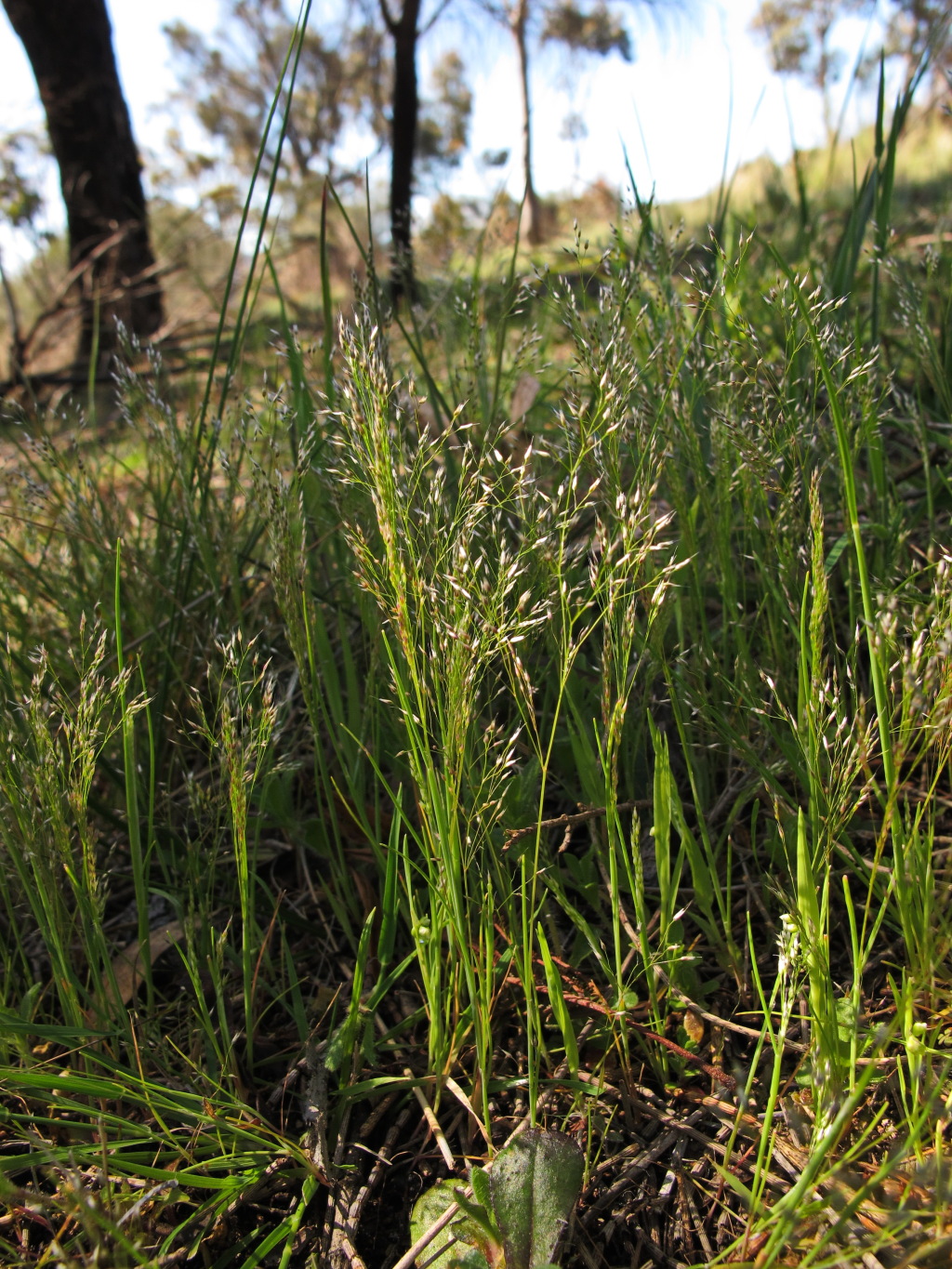Aira cupaniana
Guss.Culms to 40 cm high. Leaves glabrous, minutely scabrous along nerves; blade inrolled, to 8 cm long and 0.5 mm wide; ligule toothed at apex, to 5 mm long. Panicle initially contracted with erect branches, finally open to sparse with spreading branches, to 15 cm long and 12 cm wide. Spikelets 1.8–2.5 mm long; glumes equal or the lower slightly longer, obtuse to acute, often shortly apiculate; lemmas (excluding membranous apical lobes) from one-half to two-thirds as long as glumes, glabrous except for short callus hairs, minutely scabrous; awn usually absent from lower floret, upper floret with awn inserted about one-third from base, 2–3 mm long. Flowers Sep.–Dec.
LoM, MuM, Wim, GleP, VVP, VRiv, MSB, MuF, GipP, OtP, WaP, Gold, CVU, GGr, DunT, NIS, EGL, EGU, WPro, HSF, HNF, OtR, Strz, MonT, VAlp. Naturalized in all States except NT. Indigenous to southern Europe. Widespread in Victoria across a wide range of habitats, but not in perpetually moist sites or semi-arid areas, often coextensive with A. caryophyllea.
Some specimens have an abruptly widened pedicel immediately below the spikelet. Although this feature is often considered to be diagnostic of the species, the same feature is occasionally found on specimens agreeing in all other respects with either A. caryophyllea or A. elegantissima.
Walsh, N.G. (1994). Poaceae. In: Walsh, N.G.; Entwisle, T.J., Flora of Victoria Vol. 2, Ferns and Allied Plants, Conifers and Monocotyledons, pp. 356–627. Inkata Press, Melbourne.
 Spinning
Spinning




